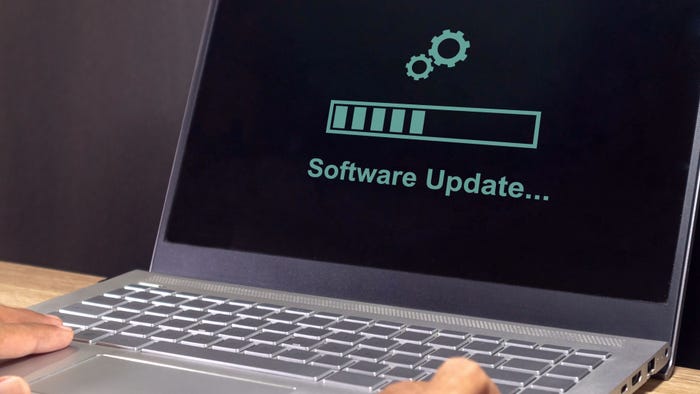Siemens Shows Up For Black Hat Demo Of SCADA Hack
NSS Labs researcher Dillon Beresford shows holes in Siemens programmable logic controllers (PLCs) that could lead to attacks
August 5, 2011

BLACK HAT USA 2011 -- Las Vegas -- A researcher who discovered major holes in Siemens' programmable logic controllers (PLCs) finally got his day on stage to reveal them after having to pull a planned presentation on the vulnerabilities earlier this year due to concerns of possible risk to human life -- and a Siemens computer emergency response team (CERT) member was on hand for the demo here.
Dillon Beresford, a researcher with NSS Labs, showed a backdoor in Siemens S7-300, S7-400, and S7-1200 devices that allowed him to get inside and capture passwords and reprogram PLC logic in such a way that he could shut down the systems altogether or cause them to eventually crash. He staged a live demonstration of how he could control the Siemens devices, which are used in power and manufacturing plants worldwide.
Beresford had canceled his planned talk at TakedownCon 2011 in Dallas at the eleventh hour amid safety concerns, and provided ICS-CERT and Siemens with details of the vulnerabilities and PoC exploits.
Thomas Brandstetter, acting head of Siemens Product CERT, took the stage at Black Hat briefly with Beresford to confirm that Siemens was working on fixing the flaws in its devices. Brandstetter, who noted that he is not an official corporate Siemens spokesperson, in a press briefing after the talk said the company needs "time to go after those vulnerabilities" and to ensure that any fixes to the products don't negatively impact plant operations.
"Siemens created a product CERT eight months ago to handle vulnerabilities in its products and to work with the security community," Brandstetter said.
Meanwhile, it took Beresford, who says he's no SCADA expert, only about two-and-half hours to write code to exploit the backdoor in the Siemens PLCs. He found a hard-coded password -- "Basisk," German for "basic" -- and was then able to open a command shell: "That allowed me to do other things," such as perform a memory dump, capture passwords, and reprogram the programmable logic, he says.
The backdoor, which likely was put in place for diagnostics purposes, could allow attackers to get inside and perform arbitrary commands on the systems and intercept any communications coming to the PLC, he says. Beresford wrote a Metasploit module for the hack.
In a lighter moment in his research, Beresford says he also found an "Easter egg" of animated dancing monkeys in the Siemens firmware. So he had shirts with the dancing monkeys made for himself and Siemens for Black Hat, and Siemens' Brandstetter gamely wore his to the session, with the word "PWND" emblazoned on the back.
"In the beginning [of the vulnerability disclosure], the Siemens PR team didn't talk to the engineering team," Beresford says, but that has since changed. "I give [Siemens] a lot of credit for not trying to pull my talk."
Beresford says there are plenty of PLCs connected to the Internet, whether operators are aware of them or not. "I'm not here to freak you out. But an attack on PLCs for 24 hours could cause it to blow up a plant," he says.
The bottom line is that it's not that difficult to wrest control of these devices. Beresford says his research debunks theories by experts, such as Ralph Langner, that it would take a major nation-state to pull off a devastating power grid hack. Although Beresford didn't write any exploit code, his proof-of-concept could be easily parlayed into a worm-borne attack similar to the way Stuxnet spread.
"This creates an awareness that not only nation-states [can hack SCADA systems], but it's now in the hands of researchers, and it's only a matter of time," Beresford says. "Someone could use it to cause damage to control systems."
But Beresford's hack is actually more streamlined than Stuxnet was: His went directly at the PLC. "I directly attacked the PLC, unlike Stuxnet," Beresford says. "Stuxnet pivoted off of an engineering workstation. I'm not sure why they did that -- they didn't need to go to that trouble. They probably wanted something on that workstation."
At the heart of the holes in the Siemens devices are the lack of access control to them, which, like other PLC systems, use the 802.3 Ethernet Profibus and Profinet LAN protocols, which communicate via TSAP over TCP Port 102. TSAP transmits packets in plain text, too. TSAP, like TCP, is an older protocol that was not created with security in mind. So it's a matter of PLC manufacturers better locking them down. "The protocols are not broken -- it's the lack of access control," Beresford says.
It's not just Siemens SCADA systems that are at risk of such attacks. Jonathan Pollet, a SCADA security expert and founder and principal consultant at Red Tiger Security, says the threat is "systemic across all PLCs."
The researchers say it's likely these attacks could also work against GE, Rockwell, and other SCADA products that run the same communications protocols. The evolution of open systems and open protocols among these devices has left the door open for malicious activity, Pollet says. "And we don't have the capability to log forensic information in these products," he says.
Have a comment on this story? Please click "Add Your Comment" below. If you'd like to contact Dark Reading's editors directly, send us a message.
Read more about:
Black Hat NewsAbout the Author
You May Also Like

_Daniren_Alamy.jpg?width=700&auto=webp&quality=80&disable=upscale)
